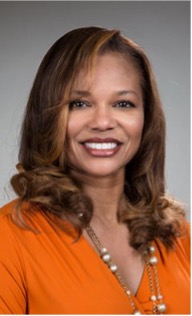May 10, 2022
8 Simple Ways to Smooth Practice Flow and Get Profits Back on Track
In this era in which reimbursement is trending downward and is frequently time-based, providers must make every moment of their clinic day count. Providers must structure their patient schedule at optimal efficiency by seeing a sufficient volume and complexity of patient visits during each and every clinic day.
One way to optimize profits is to avoid unnecessary gaps in the patient schedule. Few providers realize that missing just one established patient level three E/M visit per day at $92 average reimbursement per clinic day (assuming 5 clinic days per week for 48 work weeks per year per provider), would cost a practice more than $22,000 in annual losses due to just one no-show per day!
Following are some simple best practices to avoid these revenue and productivity losses:
- Deploy REMOTE PATIENT MONITORING (RPM) technology for chronic conditions to keep the patient healthy, out of the hospital, and confirm that they are remaining compliant with the provider’s treatment plan. RPM is now a billable treatment modality to most insurance payors and can supplement clinic revenues and keep patients engaged in their own care.
- Start the day with a short “TEAM HUDDLE” each morning between the provider, MAs and scheduler to review that day’s patient schedule. This will allow the MAs to anticipate when specific supplies, labs, or tests will be needed by the provider at the appropriate time, thereby smoothing practice flow, and delivering more timely care throughout the clinic day.
- MAXIMIZE COMPLEXITY AND # SERVICES per visit. For example, when patients call to schedule a problem-oriented visit, have the staff ask if there is anything else they’d like to discuss during the visit, like prescription refills, mammograms, or labs for an upcoming physical.
- PRESENT ALTERNATIVES to unnecessary patient office visits. Remind the patient that televisits are available to discuss uncomplicated issues with the provider. Many virtual visits are now reimbursable, when initiated by the patient, and may provide indirect rewards to the practice by increasing the complexity (and reimbursement) of future in-person office visits. While televisits provide lower reimbursement per minute than an in-person office visit, the provider may use fewer resources, encounter more patients per hour and provide more personalized interaction with the patient than an in-person office visit.
- Utilize TECHNOLOGY, automation, and online insurance verifications to obtain authorizations. Time spent on the phone with payors can be better spent serving patients who are physically present in the office.
- CONFIRM INSURANCE eligibility, benefits, and copays before every encounter. Revenue cycle management begins when a patient schedules an appointment. If the staff does not confirm that their insurance is active and collects any copay or deductible that is due at the time of service, the practice could forego 30-100% of its payment for that encounter.
- DELEGATE many clinical and administrative tasks. Have MAs discuss and document the patient’s HPI, history, and medications, at the beginning of the visit, assist in transcribing notes from the encounter during the visit, and implement provider orders for prescriptions, tests, and/or referrals following the visit. This effort will conserve the provider’s time in documentation and make it possible for the provider to not miss entering important information into the chart, and possibly be able to see more patients during the clinic day.
- AT CHECK-OUT, offer every patient a FUTURE APPOINTMENT, either for a follow-up or an annual appointment. Use technology (text message, robocalls, etc.) 7-days, 2 days ahead, as well as the morning of the visit. The staff should keep a waitlist of patients needing a same day “urgent” appointment. That way if a patient cancels, your staff is able to fill any gaps in the schedule with patients seeking a same-day, higher-acuity visit. Back-filling that time slot avoids missing those E/M revenues from a no-show and could promptly accommodate a patient who may be experiencing a problem.
By Valora S. Gurganious, MBA CHBC


























